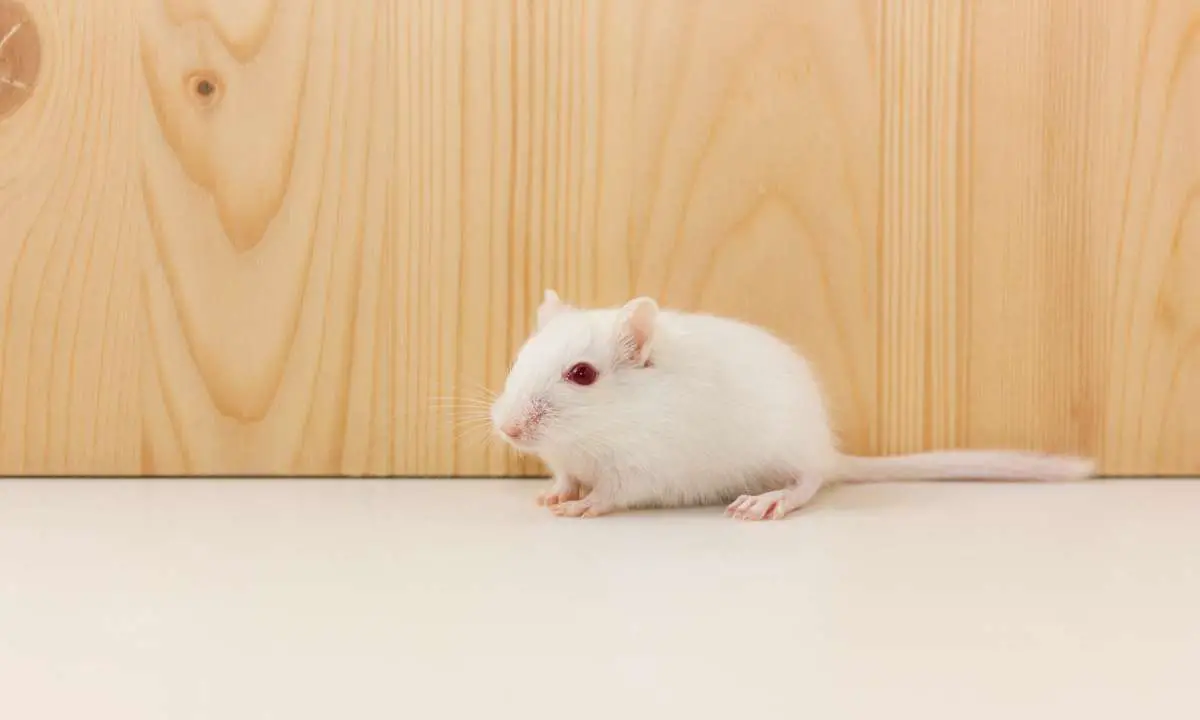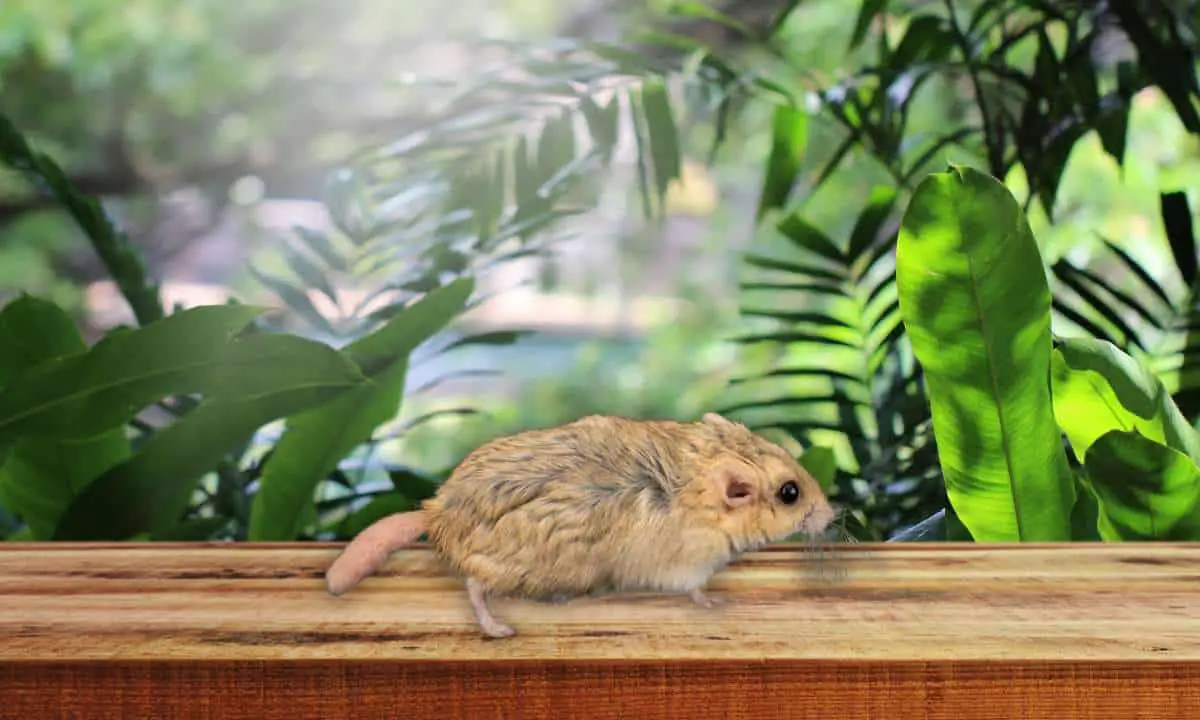Gerbils are adorable small animals that make wonderful pets for individuals and families alike. These friendly creatures are social by nature and thrive on interaction with their owners.
In this article, we’ll be focusing on albino gerbils, which are a unique and rare variety of these popular pets. Albino gerbils have special care requirements that make them different from other gerbils, and we’ll be exploring these requirements in detail.
Whether you’re a seasoned gerbil owner or considering getting your first pet, this article will provide you with all the information you need to give your albino gerbil the best possible care.
| Topic | Key Takeaways |
|---|---|
| Albino Gerbils | – Albino gerbils are a rare but fascinating variant of the Mongolian gerbil. They have white or cream coats and pink or red eyes due to a genetic mutation. Albino gerbils are generally healthy but can be prone to eye problems such as infections and injuries. Owners of albino gerbils should be aware of their special needs and be prepared to provide appropriate care. |
| Gerbil Eye Health | – Albino gerbils are prone to eye problems due to their lack of pigmentation. Common eye problems in gerbils include infections and injuries. Owners can help prevent eye problems by keeping their gerbils’ living spaces clean and providing a healthy diet. Treatment for eye problems may include home remedies or veterinary care depending on the severity of the issue. Gerbils with red eyes are not necessarily blind, but they may have reduced vision. |
| Albino Animals and Mutations | – Albinism is a genetic mutation that affects the production of pigment in animals. Albino animals can have unique characteristics and may be more susceptible to health problems. Breeding and owning albino animals raises ethical concerns due to their vulnerability and potential health issues. Albino animals do not necessarily have a shorter lifespan, but they may require special care to maintain their health. |
Table of Contents
Albino Gerbils: Understanding Gerbil Eye Colors
Gerbils come in many different coat colors, and their eyes can also come in a variety of shades. While most gerbils have dark eyes, some have red or pink eyes.
The red-eyed gerbils are often referred to as “albino,” but this isn’t entirely accurate as there are different types of albino gerbils. One type is the “pink-eyed white” gerbil, which has white fur and pink eyes.
Another type is the “black-eyed white” gerbil, which has white fur and dark eyes. There is also the “cream” or “pew” gerbil, which has a light-colored coat and dark eyes.
The color of a gerbil’s eyes is determined by genetics. The gene that triggers the red or pink eye color in gerbils is the same one that causes albinoism in other animals.
However, not all gerbils with red or pink eyes are true albinos. Sometimes, the gene that produces the agouti or wild-type coloration in gerbils can dilute the pigment in the eyes, resulting in red or pink eyes.
Regardless of the cause, gerbils with red eyes may have trouble focusing and seeing things clearly, as their vision is often affected.
They can still see and function normally, and their eye color doesn’t harm them in any way. It’s important to note that not all white gerbils have red eyes, and not all gerbils with red eyes are white.
Many different eye colors can exist in gerbils, including dark-eyed colors like black, argent, and colorpoint.
White gerbils with dark eyes are often referred to as “white dark-eyed” or “white non-RED” gerbils.
In summary, while white gerbils with red eyes are a common sight in pet stores, they aren’t the only type of gerbil with red eyes.
Gerbil eye color is determined by genetics, and different eye colors can come with different coat colors.
Regardless of their eye color, gerbils make great pets and are available in many different colors and varieties.

Albino Gerbils
Albino gerbils are unique pets that require special care due to their genetic makeup. They are known for their white fur and red or pink eyes, which is a result of a genetic mutation that prevents the production of melanin.
Unlike other gerbil color variations, such as argentite and dilute, albino gerbils usually have pure white fur, although sometimes they may have a cream-colored tint.
Despite their lack of pigmentation, albino gerbils have excellent vision and can see just as well as gerbils with different eye colors. They may have trouble focusing in bright light and are more sensitive to light than gerbils with darker eyes.
It’s essential to keep albino gerbils in an appropriate environment, as they can harm their eyes if exposed to bright light for extended periods. They should also be kept away from direct sunlight, as the UV rays can cause harm to their skin and eyes.
Albino gerbils have a similar temperament to other gerbil color variations and are very social creatures. They love to play, and it’s recommended to keep them in pairs or groups to prevent loneliness.
Their hair is typically shorter and finer than other gerbil types, but they are still soft to the touch.
If you’re interested in getting an albino gerbil, it’s essential to take proper care of them to ensure they live long and healthy lives. This includes providing them with suitable habitats, the right type of food, and regular vet checkups.
Are Albino Gerbils Rare?
Albino gerbils are not considered rare in the pet trade, as they can be bred for this specific trait. However, in the wild, albino gerbils may be less common as they are more visible to predators and may have a harder time surviving. It is important to note that just because albino gerbils are not considered rare in captivity, they still require proper care and attention to ensure their health and well-being.
Discover more about albino gerbils and why they make unique and lovable pets.
Care Requirements
White gerbils with red eyes have unique care requirements that you need to be aware of. These small animals need an environment that is clean, safe, and comfortable.
When setting up their habitat, make sure to choose a cage that is large enough for them to move around freely, but also secure enough to prevent them from escaping.
It’s essential to keep your albino gerbils’ living space clean and dry. Regularly change their bedding, as soiled bedding can trigger respiratory issues. Use soft bedding materials, such as shredded paper or aspen shavings, to keep them warm and cozy.
In terms of temperature and humidity, white gerbils with red eyes require an environment that is neither too hot nor too cold.
Keep their habitat in a room with a consistent temperature of around 68-72°F (20-22°C) and a humidity level of around 40-60%.
When it comes to feeding, white gerbils with red eyes require a balanced diet that includes pellets, seeds, fresh vegetables, and fruits. Provide fresh water daily, and keep the water bottle clean to avoid contamination.
It’s essential to keep an eye on your albino gerbils’ health. Regularly check for signs of illness, such as lethargy, loss of appetite, or trouble breathing. Seek veterinary care if necessary.
Overall, taking care of white gerbils with red eyes requires dedication and attention to detail. However, with proper care, these unique pets can thrive and bring joy to your life for many years to come.
Gerbil Eye Health for Albino Gerbils
The genetics of gerbil eye color and health play a crucial role in determining the well-being of your albino gerbil’s eyes. Albino gerbils have white fur and pink or red eyes due to the absence of pigment.
As a result, their eyes are more sensitive to light and prone to damage. It is essential to take proper care of their eyes to ensure their good health.
Common eye problems in gerbils include infections and injuries. Eye infections can be caused by bacteria, viruses, or fungi, and can result in redness, swelling, discharge, and crusting around the eyes.
Injuries can occur due to scratching, fighting, or accidents, and can lead to scratches, cuts, or even loss of an eye.
If you notice any signs of eye problems in your albino gerbil, it is crucial to seek veterinary care immediately.
Treatments for gerbil eye problems may include antibiotics, antifungal medications, or anti-inflammatory drugs. Home remedies such as warm compresses and saline rinses may also help soothe the eyes.
Contrary to popular belief, gerbils with red eyes are not necessarily blind. While their vision may not be as sharp as that of gerbils with dark eyes, they can still see well enough to get around and interact with their surroundings.
It is essential to keep their environment safe and well-lit to minimize the risk of injury and promote good eye health.
To identify and treat eye issues in gerbils, it is important to observe their behavior and look for signs of discomfort or irritation around the eyes.
Regularly inspecting their eyes can help you catch any problems early on and prevent them from worsening.
Red or irritated eyes in gerbils may be caused by a variety of factors, such as allergies, dry air, or dust. Ensuring that their bedding is clean and dust-free, providing adequate ventilation, and keeping their environment free of potential irritants can help prevent eye problems.
In summary, proper care and attention are essential for maintaining the eye health of albino gerbils. Regular observation and quick action at the first sign of eye problems, combined with appropriate veterinary care and preventative measures, can help ensure that your gerbil enjoys good eye health and overall well-being.
Albino Animals and Mutations
Albinism is a genetic mutation that occurs in animals when they inherit two copies of a recessive gene. This mutation affects the production of melanin, the pigment that gives color to the hair, skin, and eyes.
As a result, albino animals have white or cream-colored fur, pink or red eyes, and pale skin. While albino animals may look unique and fascinating, they may also face some health challenges, including poor vision and sensitivity to sunlight.
Albinism is not limited to gerbils with red eyes. Other animals, such as rabbits, squirrels, snakes, birds, and even whales, can also be albino. In some cases, the lack of pigment can make these animals more vulnerable to predators or less able to camouflage themselves in their environment.
The breeding and owning of albino animals can be a controversial issue due to ethical concerns. Some argue that the breeding of albino animals perpetuates genetic defects and unnecessary suffering, while others argue that it is a personal choice and can even promote conservation efforts.
It is important for individuals to educate themselves on the potential risks and responsibilities of owning and breeding albino animals before making a decision.
There is no evidence to suggest that albino animals live shorter lives than animals with pigmented fur.
They may be more susceptible to certain health issues, such as vision problems and skin cancer.
It is important for owners to provide proper care and protection for their albino pets, including regular veterinary check-ups and avoidance of prolonged sun exposure.
In conclusion, albinism is a genetic mutation that affects many different animals, including gerbils with red eyes. While albino animals may be unique and fascinating to look at, they may also face health challenges and ethical concerns.
It is important to approach the breeding and owning of albino animals with careful consideration and responsible care.
How long do albino gerbils live?
On average, albino gerbils can live for around 2 to 4 years, which is the same as the lifespan of other gerbil color varieties. However, with proper care, some albino gerbils have been known to live up to 5 years or more. It’s important to note that like all animals, the lifespan of a gerbil can be influenced by factors such as genetics, diet, environment, and overall health.
Therefore, providing a healthy and stimulating environment, feeding them a balanced diet, and taking them for regular checkups with a veterinarian can help ensure a long and happy life for your albino gerbil.
Conclusion
In conclusion, albino gerbils are unique and wonderful pets. It’s important to note that their eyes require special attention and care due to their lack of pigment.
We’ve learned the key points on how to properly care for albino gerbils, including providing a balanced diet, exercise, and a clean living environment.
As with any pet, responsible ownership is essential to ensure their health and wellbeing. Albino gerbils thrive in a loving and nurturing environment with proper care.
So, whether you’re new to the world of gerbils or an experienced owner, consider adopting an albino gerbil and providing them with the loving home that they deserve.
FAQ
Are albino gerbils rare?
True albinism in gerbils is rare. Albino gerbils have white or cream coats and pink or red eyes, but they have not been introduced to the pet trade. While white gerbils with pink or red eyes exist, they are not true albinos.
Therefore, albino gerbils are unique and fascinating pets with special care requirements.
What is the rarest color gerbil?
The rarest color of gerbil is a matter of debate, but some sources suggest that lilac gerbils are rare due to their recessive color gene. Argente Cream is also considered rare and the lightest in shade.
However, albino gerbils are also considered rare. It is important to note that the most common colors of gerbils are brown, black, and white, while agouti is the color that is most likely to be seen in the wild.
Why are my gerbil’s eyes red?
Gerbils can have red eyes as one of their four different eye colors, which include black, wine, red, and pink. Red eyes in gerbils are caused by genetic mutations, but they are not the same mutations that cause albinism. All gerbils, regardless of eye color, can sometimes get red mucus around the eyes, which is caused by stress or illness.
Red eyes in gerbils can also be a sign of an eye infection, which can cause swollen, puffy, or runny eyes. Overcrowding or an inability to get along with cage mates can also cause stress leading to red eyes and itchiness
What colors can gerbils see?
Gerbils see in black and white, but they can still tell colors apart. Gerbils can see clearly, but they rely more on their sense of smell than their eyesight. Gerbils can see in color, but they are likely red-green colorblind.
Gerbils have better long-distance vision than near vision. Gerbils’ eyes are pink, and they have black eyes. The fur color of gerbils varies, with most having brown fur that has gray and orange running through their hair.



